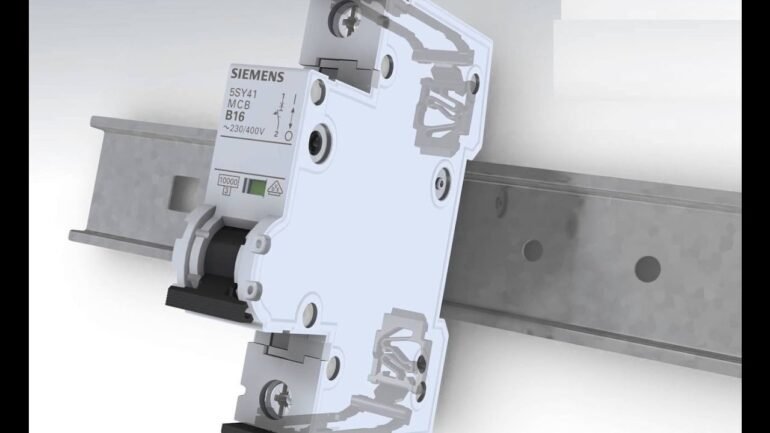Circuit breakers are employed as specialized safety devices to help stop electrical circuits from drawing or using more electricity than they were originally intended to. They aid in avoiding any fire risks that arise from overheated wiring in your house or place of business. Every outlet in your house or place of business is directly connected to a wire network that is powered by a circuit breaker. When circuit breakers trip, they can readily be reset when the source of the extra current flow has been fixed or eliminated. The majority of residential dwellings and small office buildings are wired into the electricity system of the regional utility company, which offers both 120-volt and 240-volt currents. The majority of the outlets in your house operate at 120 volts. Nevertheless, since they require more energy to function effectively, some of the appliances in your house or workplace can need a higher voltage, typically of 240 volts.
What Are Single Pole MCBs?
The single pole MCB narrow switches on your electrical panel. These are utilized for many different appliances, including air compressors, vacuums, fans, power tools, curling irons, blow dryers, outdoor lighting, TVs, radios, computers, DVD players, clocks, and vacuums. A single pole breaker is wired with a hot wire and a neutral wire. Only the single-pole breaker in a circuit will trip if there is an overload. Single-pole MCBs have a modest number of uses, but they do have several significant and useful ones. Outdoor streetlights, the input of control circuits, testing boards, household distribution boards, etc. are some examples of single-pole MCB uses. In most cases, single pole breakers are employed with 120-volt, 15–20-amp circuits. A single pair individually of hot and neutral wire are used in their construction.
Factors To Consider for a Single Pole MCB
It is vital to always consider some important factors to think about while buying MCBs to ensure the optimum safety of people and property.
-
Securing Terminals:
Even if you have a very high-quality MCB and power cable connected to it, a hazardous occurrence could occur if your electrician fails to properly terminate the cable into the MCB’s input and output terminals. As the cage directs the cable for methodical termination, safety terminals eliminate the chance of erroneous termination.
-
Cool operation:
India has a wide range of climates. The summers could be unbearably hot with temperatures outside that could go as high as 50 °C. With a passing current, the temperature within an MCB may even rise. A good MCB design must therefore incorporate an effective design that keeps the entire MCB unit cool while it is in use. When individual poles are situated next to one another, an MCB with grooves on the exterior body will encourage improved air circulation within, cooling the switch operation as a whole.
-
Terminations for large cables:
Copper or aluminum cables terminating into an MCB can have a cross-sectional area as thick as 35mm2. Large termination ports facilitate correct termination, which is necessary to guarantee the dependable operation of an MCB in an incident.
-
Superior MCB Enclosure:
What good are fancy bells and whistles on an MCB if it can’t keep its parts together and collapses or catches fire during a short-circuit or overload? High-precision thermoplastic material is typically molded to provide a good quality MCB. It should have high melting point, high dielectric strength, low water absorption, and high temperature resistance flame-retardant qualities.
How to Connect a Single Pole MCB
It’s a small procedure to consider connecting a single pole MCB.
- Choose an MCB first, making sure that its rating matches your load.
- Verify the input and output side of the MCB, which may be indicated on your MCB by writing or printing. If nothing is stated, it is best to connect the input on the side and the output on the top.
- Create the circuit as directed above if you have several loads linked to a common neutral.



